The question of how the Qing empire conceived of its strategic space—or, rather, failed to do so correctly—is where the field of modern Chinese history began. In textbooks, popular accounts, and media references, the Opium War has for many decades (and still often today) been treated not as an instance of the extremes of global capitalism or British imperial aggression, but primarily as a Qing failure—and not simply a failure to develop military tactics and technological capabilities for defending against British ships of the line or protecting vulnerable waterways supplying the capital. Rather, the Opium War has been viewed as a symptom and symbol of a much larger alleged cluster of strategic failures: a failure to understand and value world trade, a failure to value modern (Western) technology, a failure to appreciate the importance of maritime in addition to continental defense, and a failure to understand the post-Westphalian world and the place of the Qing empire in it.
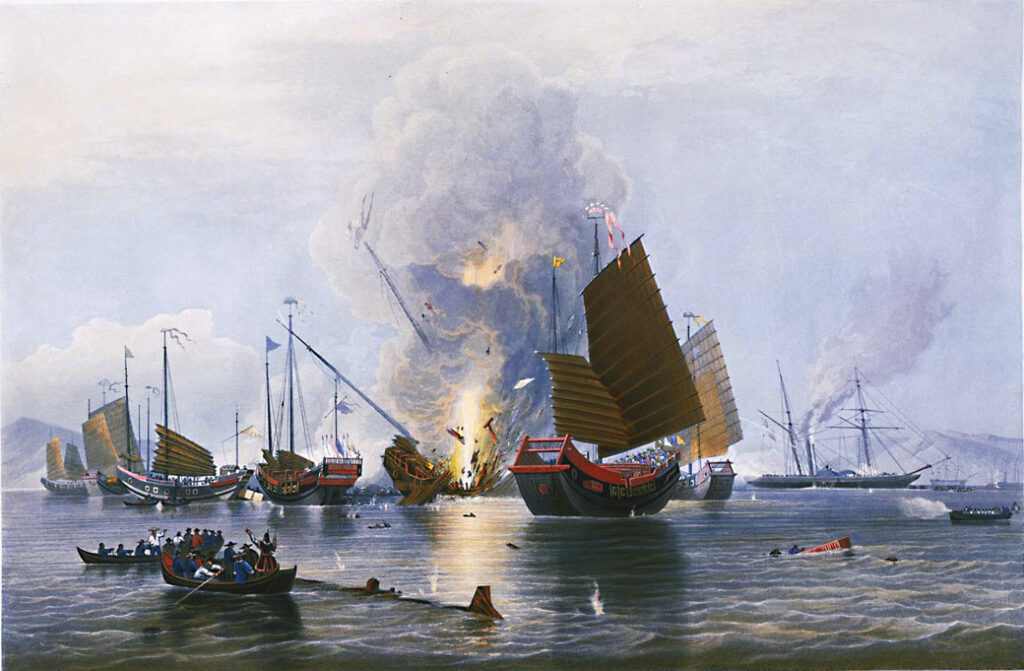
This misunderstanding of the Opium War and, more broadly, of Qing strategic space originates in three problematic concepts that have long been assumed key to understanding China’s past: tianxia (all under heaven), Sinicization, and the tributary system. In this essay, I argue that all three are either mythological or at best misleading. In fact, the Qing sense of strategic space was formed by military expansionism into China and Central Asia and by the Qing empire’s initial effort to restrict Han outward migration over land and sea. Then, from the nineteenth century, the Qing empire changed course to promote Han settler colonialism in non-Chinese Inner Asia, though without state backing, in Southeast Asia and the South China Sea. Simultaneously, Chinese political thinkers began to recognize the strategic significance of non-Chinese lands in Qing Inner Asia and Taiwan and include them within a new territorial definition of “China”—a definition that would transcend the collapse of the Qing empire itself.
Persistence of an Old Model
Many college courses and textbooks in the United States and Europe divide Chinese history and begin the “modern” part with the Opium War, or its precursor the Canton trading system (the supposedly unsustainable trade arrangement that buoyed the East India Company and made China’s first billionaires). The Kuomintang and Chinese Communist Party regimes have considered the same events—and defeats—as foundational and fundamental to China’s modern identity and purpose. In the People’s Republic of China (PRC) periodization, “modern” history (jindaishi) begins in 1839. The infamous “century of humiliation” also began then.
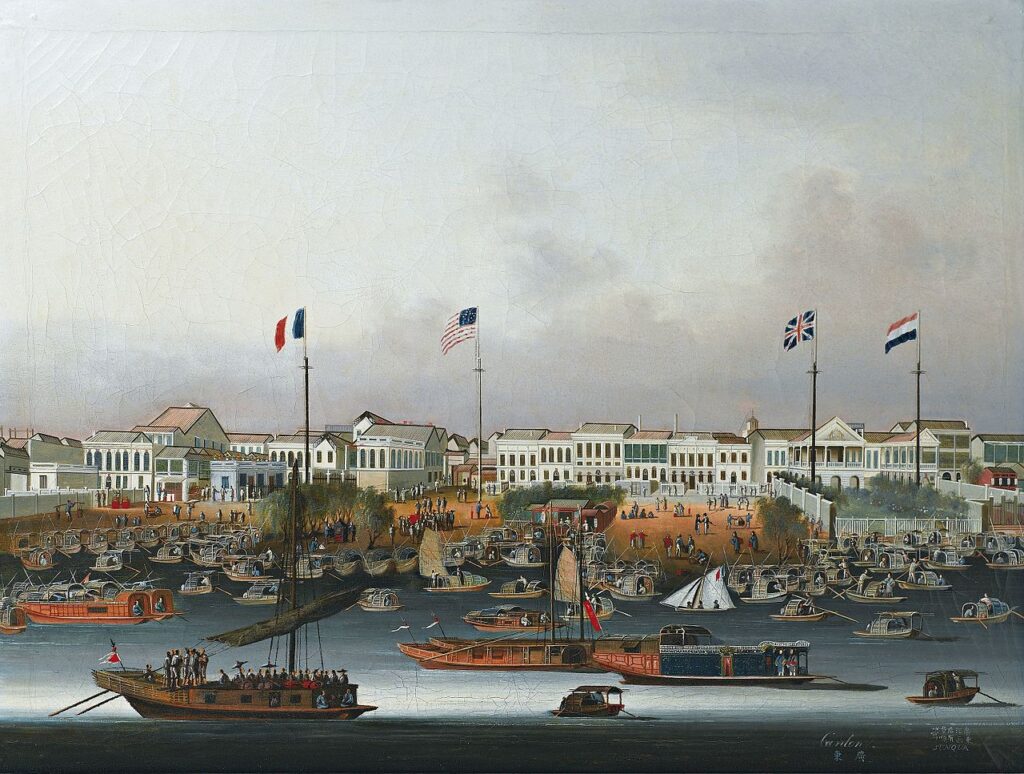
In Western historiography (which has also influenced Chinese nationalist views), the first explanations for these Qing strategic failures were culturalist (e.g., they were the fault of “Oriental” despotism, or explained by Weber’s distinctions between Protestantism, on the one hand, and Confucianism and Taoism, on the other). But beyond those, the most influential explanations have turned on an argument about how the Qing (and eternal “China”) envisioned space and its relations with other states in space.
The argument goes something like this: isolated, stagnant China had a blinkered, solipsistic view of its own self-sufficient centrality. It conceptualized its sovereignty, according to the vague notion of tianxia, as waves of influence radiating out from a Sinic core through concentric zones of progressively more barbarous lands and peoples. Over time, the core lands of China had grown by peacefully and spontaneously Sinicizing closer neighbors. Those lands a bit farther out but still within bounds of civilization organized themselves around China as tributaries, in a system where tribute and homage to the emperor were required in order to trade with China. It was supposedly this requirement, at which the British bristled, that led to the Opium War to “open” the Qing to trade and modernity.1
Dangers of the Old Model
The narrative described above, built on the tryptic of tianxia, Sinicization, and tributary system, was codified by John King Fairbank in 1968, though it reflects treasured tenets of Confucian ideology and propaganda that were originally formulated in the first millennium BCE. It is entirely wrong about the Qing empire. Nevertheless, that does not stop the narrative from being endlessly repeated.2 It is important to remember, then, that a lot of thinking about Qing (and Chinese) strategic space today is driven by an old model, rather than the reality, of how the empire conceived strategic space. This is true inside China as well as outside, since the paradigm is by now something of a global joint venture. The PRC grants it official status, stressing foreign aggression more than Chinese strategic failure but nevertheless embracing the same basic explanatory narrative and its modern implications.
Shifting this paradigm is a big job. Here I have space only to point out a couple of the more dangerous ways this model misleads us, but I hope that scholars of China’s international relations will catch up on the momentous developments in the field of Qing history since Fairbank was writing half a century ago.
Misunderstanding Qing territoriality on international frontiers. The tianxia paradigm with its concentric rings and civilizational gradient leads to the assumption that the Qing did not concretely demarcate territory, or care to do so. That is untrue. For example, in negotiating its first treaty with a more or less European power—the Treaty of Nerchinsk (1689) concluded with Russia—the empire mobilized maps and landmarks to claim lands north of the Amur as Qing.3 Because the Qing backed up their claims with the credible threat of force, they successfully concluded a treaty that the Soviet Union would later call an unequal treaty—unequal against Russia, not against China. Subsequent treaties in Mongolia, Xinjiang, and elsewhere defined boundaries clearly, though not always precisely with a single line but rather with stone markers on the ground. Similarly, on the sea, the Qing empire clearly conceptualized and, through the early nineteenth century, defended with a robust coast guard its zone of maritime interest along the coast as far out as the inward-lying islands.4 There were status questions, as on any imperial frontier in the eighteenth and nineteenth centuries. But what was Qing on the frontiers (and thus should be defended) and what was not Qing (and too much trouble to police) was an issue that arose frequently, and for which the court deliberated systematically and came up with clear answers.5
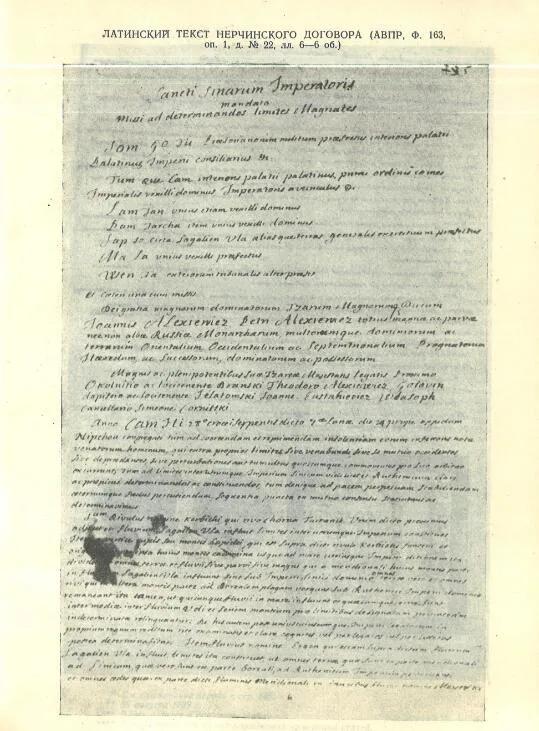
Misunderstanding Qing international relations. The belief in a Chinese and Qing “tributary system” (for which there was no indigenous term or single institution) leads not only to misunderstandings about China’s international trade (there was lots of it) but to persistent confusion about Qing relations with other states. So-called tributaries get renamed as “vassals”—for example, one textbook includes a map that draws Kazakhstan, Nepal, Bhutan, all of mainland Southeast Asia, and Korea with their modern borders and labels them “Chinese vassals,” “lost” to the Qing due to imperialist encroachment.6 Places that were firmly within the Qing empire, such as Xinjiang and Mongolia, are often confused with tributaries because they were not governed under the Chinese junxian administrative system of governors and district magistrates.
Were they tributaries? Were they places in an “outer zone,” beyond the Sinic “inner zone”?7 Are they “part of ‘China,’” and if so, when did they become so? If we dispense with the Orientalist exceptionalism of the “tribute system” and other aspects of the Fairbankian model, and simply understand the Qing as an empire not unlike other Eurasian empires (e.g., tsarist or Mughal) or even some Western European contemporaries, its plural systems of military and administrative control over colonial territories are readily comprehensible.
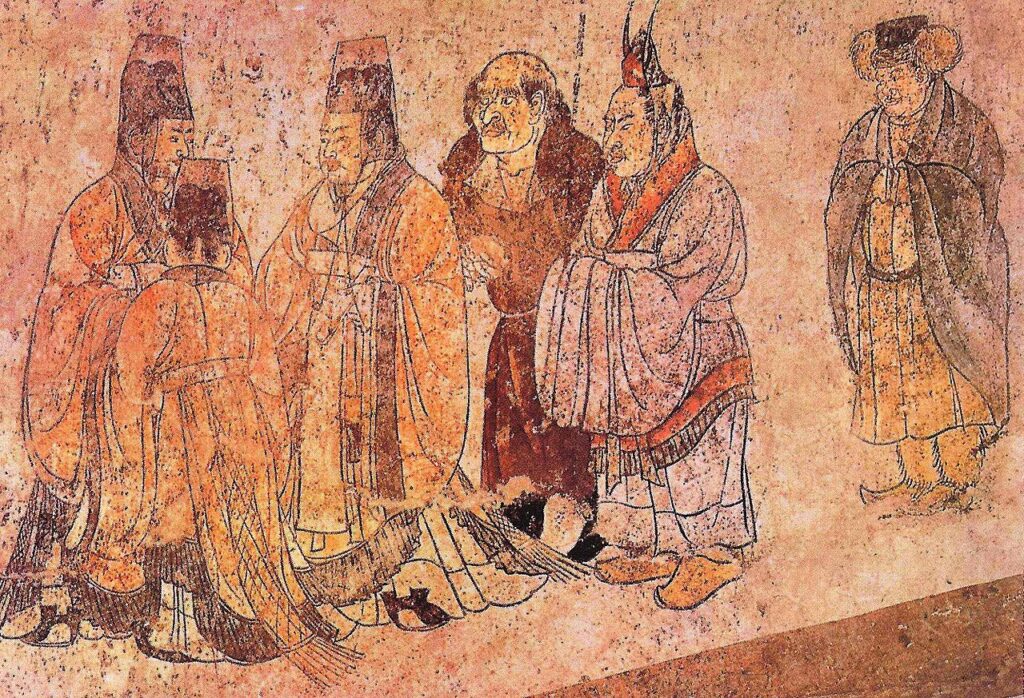
Misunderstanding the Qing strategic umbrella. Most importantly, the categorization of certain states as “tributaries” and the idea that inner and outer positionality in the Qing mental map had to do with Sinic or non-Sinic character fail entirely to explain actual Qing strategic behavior. When would the Qing empire intervene militarily, and when would it not? It fought over trade issues against supposed tributaries (the Khanate of Kokand) along the frontiers in Xinjiang. It intervened in Tibet (non-Sinic, not a Fairbankian tributary) twice, garrisoning troops and closely monitoring governance by the Gelugpa lamas. It also intervened militarily twice in Korea—the paradigmatic tributary with which Confucian hierarchical relations supposedly, according to the tributary system model, sufficed to maintain the peace. The Qing maintained troops and officials in Korea, though it was self-governing, from the early seventeenth century until the conclusion of the 1895 Sino-Japanese war. Qing relations with Tibet and Korea, in fact, look quite a lot alike—more so than either resembles Xinjiang, Taiwan, a province like Hunan, or the other iconic “tributary,” Liu Qiu (Ryukyu, Okinawa). The latter is a place where the Qing empire chose not to intervene or actively defend its central status, despite the many faithful kowtows and dragon-robes exchanged over the centuries.
Much more could be written about this misunderstanding. In particular, the tianxia, Sinicization, and the tributary system ideas have masked the expansionist character of the Qing and Chinese republics. Since the nineteenth century, Han settlers, with state backing, have colonized as much territory as Europeans did in forming the United States, often displacing native peoples in much the same way as white Americans did. But I turn now to describe with more historical accuracy the Qing empire’s conception of strategic space.

Qing Empire and Its Strategic Space
The Qing empire formed as a multiethnic, multilingual, and multicultural confederation in what is now the northeast of the PRC, with Mongol, Korean, Chinese, and Manchu as well as various Tungusic tribal components (the latter absorbed into Manchu identity). Nourished on trade with the Ming and inspired by a broad Eurasian imperial model shared by Mongol, Russian, Timurid, Mughal, Junghar, and other polities and aspiring empires, the Manchu-led confederation invaded and subdued Korea, attracted Mongol tribes, and expanded into what is now Mongolia. The Qing empire’s Manchu, Mongol, and Chinese forces moved south when the Ming empire collapsed in the mid-seventeenth century. For the next 140 years, the Qing conquest elite gradually consolidated control over north China and then, after a pause, south China. It conquered Taiwan, never before part of a state based in China, in the course of trying to wipe out the former Ming imperial family and transnational pirate confederations off the coast. It tried, but failed, to keep Han settlers out of Taiwan.
The Qing successfully blocked Russian encroachment in the north and northeast with force, diplomacy, and trade relations, ultimately employing their favored method of managing frontier trade: opening a border trade enclave where the foreign merchant community and selected Chinese merchants did business and looked after themselves under some state supervision. The Oirat or western Mongols were a bigger problem to the Qing empire than Russia had been. Indeed, the Junghars, as the emerging Oirat confederation was called, posed an existential threat as they strove to unify through force and charisma the other Mongol tribes of Mongolia, Qinghai, and Tibet, along a vast crescent from north to west of the Qing state in north China. Moreover, by the eighteenth century, Junghars enjoyed the backing of the Gelugpa (or Yellow) Tibetan Buddhist branch—a power in its own right that under the fifth Dalai Lama played a double game between Junghar and Qing, waiting to see which way to jump. By now almost all the Mongols were followers of Tibetan Buddhism, so the Gelug could play the role of kingmaker in eastern Eurasia.
For most of its first two centuries, bridging the reigns of Kangxi, Yongzheng, and Qianlong, the sector of strategic space dominating the Qing empire’s concern was the north and west where the Junghars were gathering power. This strategic concern drove the war economy and resulted in Qing westward expansion and ultimately the addition of Mongolia, Xinjiang, and Tibet to the former Ming lands. This expansion used to be called “doubling the size of China,” except these places were not yet China, though they were firmly Qing. The Qing established military administration everywhere with garrisons of bannermen under Manchu and Mongol officials known as “generals,” who in turn supervised local administrations that varied according to the traditions of the people being administered: begs in Xinjiang, princes in Mongolia, lamas in Tibet, and those district magistrates and other mandarins in China.
The Qing empire did not ignore the south or the sea, however, which offered strategic concerns of its own through the seventeenth century. After costly experiments trying to keep Chinese away from the southern sea coast to stop piracy, the Kangxi emperor reversed course in 1684 and encouraged Chinese maritime trade.8 Chinese overseas migration rode the waves of globalizing commerce, expanding especially from Guangzhou and Fujian. We can include Han colonization of Taiwan in this movement, as well as the seeding of Chinese communities throughout the Nanyang (South China Sea and Southeast Asia), with important and often powerful Chinese mercantile presence, and even some states, in Java, the Philippines, Vietnam, Thailand, and elsewhere. Although the Qing did not back them up and official Beijing expressed ambivalence, local Qing authorities in coastal areas often supported and colluded with merchants and traders alike. Well outside Qing territory, southern Chinese mercantile communities entangled themselves with local rulers—kings in Thailand, for example, and even British and French colonial authorities who resented their commercial acumen but found them very useful.9
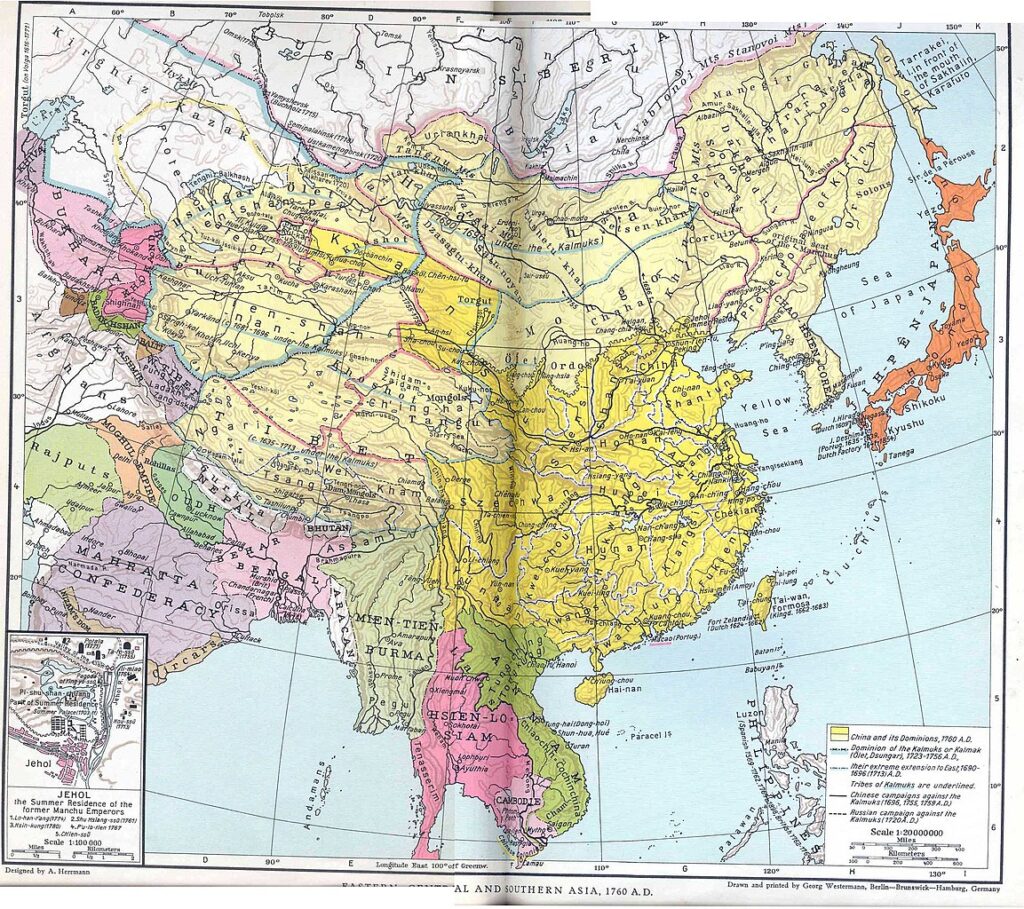
Through these overseas colonies, the Chinese economy became enmeshed in international trade circuits, massively importing South American silver and Thai rice, for example, in return for Chinese products well before the peak of better-known British trade with China. It is easy, moreover, to draw through-lines from this ongoing history of southern Chinese migration to southeast Asia to later Cantonese migration to Hawaii, the mainland United States, and Canada, and, more recently, to people from Fujian or Zhejiang’s Wenzhou to cities around the world. The concept of migratory “diaspora” is not quite adequate to take in the economic and cultural implications of this centuries-long wave of Chinese globalization. Rather, as Shih Shu-mei proposes, we should think about Chinese populations around the globe not as scattered offshoots of a Chinese state, today represented by the PRC, but as a diverse, global presence in their own right. Just as we generally do not treat Anglophone and Francophone populations around the world today—for example, in Canada, Africa, or the Caribbean—as diasporas subsidiary to England or France, we may understand Sinophone communities worldwide as cases of the same world historical processes, including economic colonialism.10
From this survey of the Qing imperial experience, we can conclude two things: early- through mid-Qing official strategic space was Eurasian. Simultaneously, however, the ambit of the Chinese world was expanding beyond the territory of the Qing empire—just as the Anglophone world progressively extended outside the direct control of the British empire and has endured when the British empire did not. Some of this Chinese expansion followed the Qing flag, such as that into central Eurasia, but a lot of it progressed beyond the Qing aegis. When talking about Qing strategic space, therefore, we should not forget that the Chinese or Sinophone world was expanding at the same time, into realms not always coeval with Qing (or later Chinese Republic or PRC) political territory.
The Great Shift in Qing Strategic Thinking
During their rapid expansion into non-Chinese lands, the Qing attempted imperial compartmentalization, actively trying to keep Han Chinese out of Taiwan, Manchuria, Mongolia, Xinjiang, and sometimes even areas in the southwest inhabited by non-Chinese peoples. In the pages of the Veritable Records, the Qianlong emperor responded to Chinese literati who had challenged the value of Qing expansion into Xinjiang in the late 1750s, which they dismissed as non-Sinic wasteland.11 Qianlong made the case for Xinjiang expansion on strategic grounds in the 1750s, and the debate crystalizes what was then a clear distinction between the Manchu or Qing conception of strategic space and that of southern Chinese scholar-officials.
By the 1830s, however, this split began to blur at both policy and conceptual levels. After repeated incursions by Central Asian groups seeking better trade access to Kashgar, the Qing got tired of dispatching bannermen from north Xinjiang to repress the adventurers. They settled the trade dispute by creating a border enclave in Kashgar and opened southern Xinjiang for the first time to legal, permanent Han settlement. The Qing had already given up on keeping Han out of Taiwan, and in the late nineteenth century they would open the gates to Manchuria and Mongolia to Han settlement as well.
There were three reasons for this acquiescence to, and later encouragement of, Han settler colonialism. First, the Qing recognized that Han settlers could help defend against foreign incursion, be it from Kokand, Russia, or Japan. Second, there was an age-old Chinese belief that happy tax-paying Chinese farmers were the basis of fiscal stability and security in a well-run state. As the cost of wars on the frontiers grew, Han literati and officials appealed to this ideology of “men plow and women weave” to argue more forcefully that through Han colonial settlement of desert, steppe, and forest frontiers, the Qing could staunch cost overruns. Of course, these optimistic armchair development economists tended to ignore the environmental, ethnic, and political differences and difficulties involved. Nonetheless, by the latter decades of the nineteenth century, Han settler colonialism was state policy around the entire non-Chinese circumference of the Qing empire. The idea that these borderlands were colonies (zhimindi) and like European colonies should be used for resource extraction to benefit the center also became unapologetically popular among Chinese statecraft thinkers at this time.12
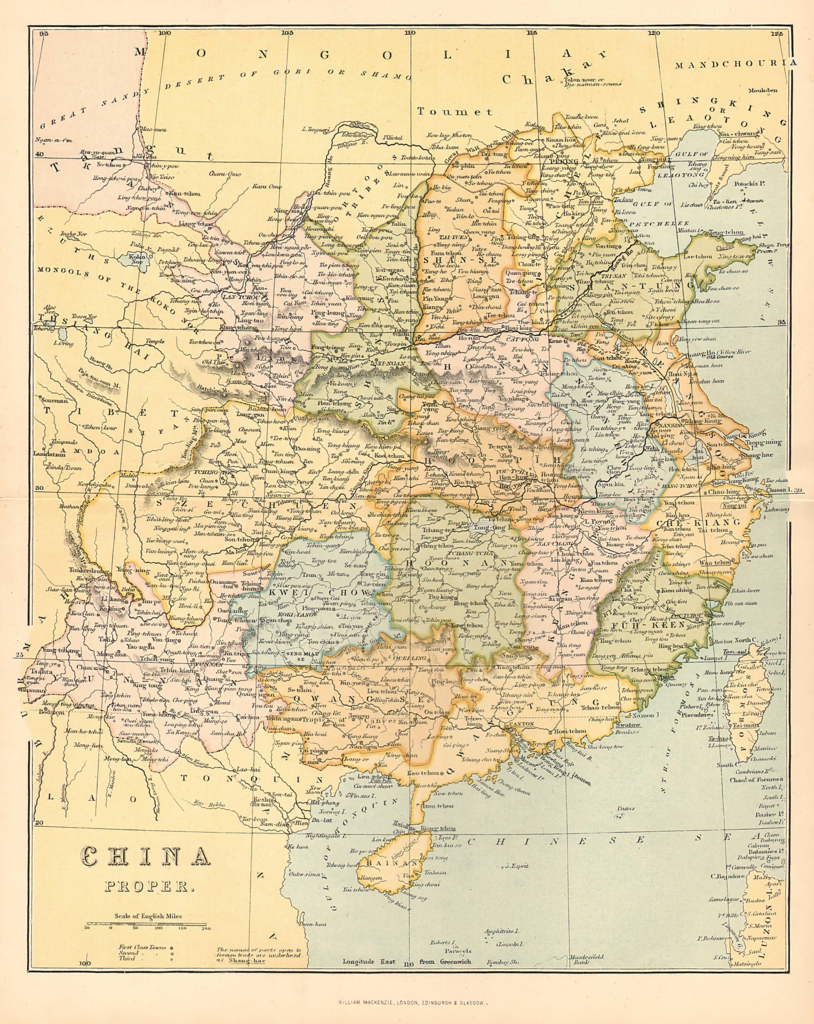
This policy change reflects the critical late-nineteenth-century shift in the Qing conception of strategic space: what had been the Qing Eurasian empire was now increasingly embraced by Chinese thinkers and officials as a Chinese empire. The Qing empire did not Sinicize, it did not “become Chinese,” as we used to say. Rather, the concept of China began to be reinvented from the eighteenth through the nineteenth century to include new Qing conquests, regardless of vast ethnic and geographic diversity. It was at this time that in Chinese versions of treaties the Qing empire began to refer to itself not just as Da Qing, but as Zhongguo. This process, which we might call the Zhongguo-ization of the Qing empire, continued beyond the Qing fall in 1912, and still continues today. The PRC conviction that vast tracts of central Eurasia as well as Taiwan “belong to China” or have been “on the map of China since ancient times” is no less hotly held for being an invented tradition.
James A. Millward is Professor of Inter-societal History in the Walsh School of Foreign Service at Georgetown University. His publications include Eurasian Crossroads: A History of Xinjiang (2021; 2007), New Qing Imperial History: The Making of Inner Asian Empire at Qing Chengde (2004), and Beyond the Pass: Economy, Ethnicity, and Empire in Qing Central Asia (1998).
IMAGE CREDITS
Banner illustration by Nate Christenson ©The National Bureau of Asian Research.
The East India Company iron steam ship Nemesis destroying Chinese war junks in Anson’s Bay, on January 7, 1841. | Wikipedia: Public Domain
Port of Canton, circa 1830. | Wikipedia: Public Domain
A copy of the Treaty of Nerchinsk in Latin, signed 1689. | Wikipedia: Public Domain
Tributary envoys being received at court. | Wikipedia: Public Domain
A most general map, including China, Chinese Tartary, and Tibet, based on individual maps of the Jesuit fathers. | Wikipedia: Public Domain
Qing Dynasty 1760 under the reign of the Qianlong Emperor. | Wikipedia: Public Domain
Map of China proper by William Mackenzie. Made circa 1866. | Wikipedia: Public Domain
ENDNOTES
- This view has been consumed most commonly in John King Fairbanks’s introduction to The Chinese World Order: Traditional China’s Foreign Relations (Cambridge: Harvard University Press, 1968), but it remains common in textbooks and other general materials about China’s past. Although Paul Cohen critiqued the idea of China before 1839 as stagnant in his Discovering History in China: American Historical Writing on the Recent Chinese Past (Columbia University Press, 1984), he did not challenge the prevalent notion that tianxia and “tribute system” had governed China’s strategic worldview and foreign relations. Sinicization is present in Fairbank’s foundational writings, but is also a key tenet of PRC ideology, most influentially formulated as the “snowball” theory by sociologist Fei Xiaotong in Zhonghua minzu duoyuan yiti geju [The Pattern of Unity in Diversity of the Zhonghua Nation) (Beijing: Zhongyang minzu xueyuan chubanshe, 1989).
- See, for example, Klaus Mühlhahn, Making China Modern: From the Great Qing to Xi Jinping (Cambridge: Harvard University Press, 2019). Another example is David C. Kang, “Hierarchy and Hegemony in International Politics,” in International Politics: Enduring Concepts and Contemporary Issues, 13th ed., ed. Robert Art and Robert Jervis (Boston: Pearson, 2017), 161–65. In this reader, recently in use in international relations courses taught to MA students at Georgetown University, Kang’s version of the old tributary model is presented as canonical in a section on “mitigation of anarchy,” next to articles by Stephen Walt on bandwagoning and Stanley Hoffman on international law. Kang originally elaborated his version of the tributary system model in China Rising: Peace, Power, and Order in East Asia (New York: Columbia University Press, 2007) and East Asia Before the West: Five Centuries of Trade and Tribute (New York: Columbia University Press, 2010).
- Peter C. Purdue, “Boundaries and Trade in the Early Modern World: Negotiations at Nerchinsk and Beijing,” Eighteenth-Century Studies 43, no. 3 (2010): 341–56. For the overall geopolitical and political economic significance of the Junghar wars on the Qing, see Purdue’s China Marches West: the Qing Conquest of Central Eurasia (Cambridge: Harvard University Press, 2010); and Zhou Yujin, “The Assertive Empire,” Georgetown University Department of History, seminar paper, 2022.
- Ronald C. Po, The Blue Frontier: Maritime Vision and Power in the Qing Empire (Cambridge: Cambridge University Press, 2018).
- On the development of Qing strategic thinking and barriers to it, see Matthew W. Mosca, From Frontier Policy to Foreign Policy: The Question of India and the Transformation of Geopolitics in Qing China (Stanford: Stanford University Press, 2013).
- Mühlhahn, Making China Modern, 102–3.
- See Yan Sun, From Empire to Nation State: Ethnic Politics in China (Cambridge: Cambridge University Press, 2020). Sun explains ethno-nationalist resistance to Han-dominated Chinese Communist Party rule in Xinjiang and Tibet as the result of these regions lying in an imperial “outer zone” that has not been fully integrated. I suggest that historians usually call such places “colonies” and should do so in this case, eschewing the Orientalist exceptionalism of the Fairbankian narrative.
- Gang Zhao, The Qing Opening to the Ocean: Chinese Maritime Policies, 1684–1757 (Honolulu: University of Hawai’i Press, 2013).
- Melissa Macauley, Distant Shores: Colonial Encounters on China’s Maritime Frontier (Princeton: Princeton University Press, 2021).
- For the useful concept of the “Sinophone” world (Chinese speaking and Chinese cultures outside Chinese states), see Shu-mei Shih, “The Concept of the Sinophone,” Proceedings of the Modern Language Association 126, no. 3 (2011): 709–18.
- James A. Millward, Beyond the Pass: Economy, Ethnicity, and Empire in Qing Central Asia, 1759–1864 (Stanford: Stanford University Press, 1998), 38–41.
- Peter B. Lavelle, The Profits of Nature: Colonial Development and the Quest for Resources in Nineteenth-Century China (New York: Columbia University Press, 2020). See also Eric Schluessel, Land of Strangers: The Civilizing Project in Qing Central Asia (New York: Columbia University Press, 2020).

